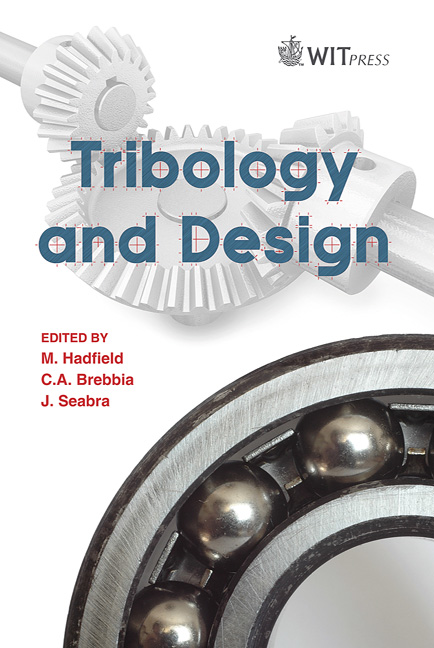Advances In Aeropropulsion Tribology And Design Using Five Key Parameters
Price
Free (open access)
Transaction
Volume
66
Pages
12
Page Range
83 - 94
Published
2010
Size
1,260 kb
Paper DOI
10.2495/TD100081
Copyright
WIT Press
Author(s)
L. Wedeven, H. Chin, W. Ogden & D. Haluck
Abstract
Difficult tribology problems with wear, scuffing and contact fatigue in aeropropulsion are being addressed with a systematic approach. Solutions to these problems have been found using a systematic tribology approach involving detailed failure analysis and simulation testing. The risks in advanced development have been substantially reduced by the inclusion of tribology attributes in mechanical system design. These attributes control lubrication and failure mechanisms (wear, scuffing and contact fatigue). The developmental process involves five key tribology parameters. Simulation of wear, scuffing and micro-pitting can be accomplished with the control of the five key tribology parameters: entraining velocity (Ue), sliding velocity (Us), film thickness-tosurface roughness ratio (h/), contact stress (both global and asperity scale) and contact temperature. Specialized test machines, test specimens and test protocols that control these parameters are able to replicate the failure mechanisms experienced in service. This approach has been used to develop next generation jet engine oil formulations that are compatible with stainless steel bearing materials. Simulation testing involving oil formulations, along with bearing steel composition and heat treatments, shows what technologies have the greatest impact on performance and where future design and development efforts should be focused. Keywords: bearing steels, adhesive wear, aeropropulsion bearings, tribology testing, systematic tribology.
Keywords
bearing steels, adhesive wear, aeropropulsion bearings, tribology testing, systematic tribology





